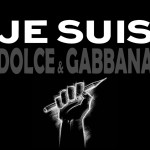La scrittrice Patrizia de Santis, nel suo libro ‘Boccaccio. L’enigma della centesima novella’ (Armando Curcio Editore), svela come Griselda, la donna più mite creata dal Boccaccio, sia in realtà un’allegoria.
ll contenuto culturalmente eversivo del Decameron di Boccaccio continua a inquietare
e dividere gli studiosi. Cosa ispira, a metà del 1300, un’ opera così meravigliosamente
anomala, dirompente, viva? Cosa la fa germinare in un terreno dove le pulsioni religiose continuano a convogliare e irreggimentare il pensiero di autori come Petrarca, per indicare il riferimento in cui, prioritariamente, vorrà identificare se stesso il XIV secolo, percorso da tensioni di rinnovamento della cristianità, e da prescismatici attacchi alla Chiesa?
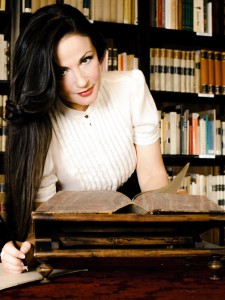
Patrizia de Santis
Del Decameron è stato individuato il solco culturale da cui proviene (la tradizione novellistica d’Oltralpe), non quello ideologico. Lo spirito vitalistico e libertario che lo percorre pare quasi eretico ai contemporanei e contro di esso giocano, sin dalla sua pubblicazione, tanto il nome già affermato di Boccaccio, quanto lafama che presto arride all’opera. Che fa allora Boccaccio? Include un cripto messaggio nella centesima novella, che ha come protagonista Griselda, uno dei personaggi più anomali dell’opera, la quale subisce con umiltà ogni sorta d’affronto e d’angheria da parte del suo crudele marito, cui un destino d’infelicità coniugale l’ha consegnata. Quando incontra questa figura femminile, il lettore percepisce che non è una donna… boccaccesca; e chi conosce la corrispondenza tra l’Autore e Petrarca si domanda perché, in quest’ ultimo, Boccaccio cercasse, additando la sua Griselda, una sorta di avallo del Decameron, e tramite lui una pre-assoluzione da parte della severa valutazione che dell’opera avrebbe potuto fare la Chiesa.
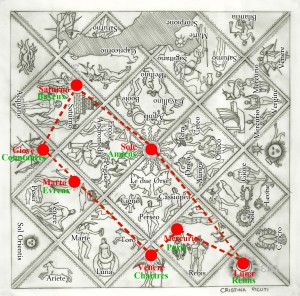
Mappa stellare
A questi non facili interrogativi prova a dare una risposta il libro di Patrizia de Santis Boccaccio, L’enigma della centesima novella , rilevando come Griselda, la donna più mite e rassegnata del Decameron, sia in realtà un’allegoria che vada letta in chiave opposta, attraverso una serie d’indizi e di rimandi di cui Boccacio avrebbe, nascostamente ma copiosamente, disseminato la novella: la quale conterrebbe un messaggio iniziatico, forse riferibile alla confraternita dei girolamini cui l’Autore appartenne, ordine – come proposto dallo studioso Renzo Manetti nel 2005 – incaricato dal 1334 di non disperdere la sapienza templare, dopo la soppressione dell’ordine avvenuta 22 anni prima. Lo confermerebbe un ciclo di affreschi, collegati alla novella, in un castello nell’Italia del Nord, contenente, in 24 quadri, altrettanti simboli d’una mappa stellare, per tramandare la valenza simbolica di Griselda, icona – scrive de Santis – del Graal, cui alluderebbe lo stesso nome scelto per lei.
di Giovanni d’Alessandro
fonte: Il Centro
 Per quelli che parlano spagnolo, TELEFONICA ha pubblicato un’interessante libro sull’etica multiculturale e la società della rete, scritto da Luis German Rodriguez L. e Miguel Angel Perez Alvarez con alcuni frammenti scritti dal Dott. Pablo Liendo-Chapellin.
Per quelli che parlano spagnolo, TELEFONICA ha pubblicato un’interessante libro sull’etica multiculturale e la società della rete, scritto da Luis German Rodriguez L. e Miguel Angel Perez Alvarez con alcuni frammenti scritti dal Dott. Pablo Liendo-Chapellin.
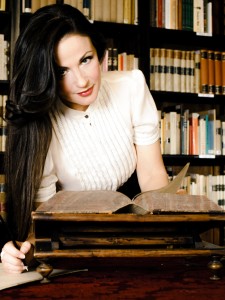
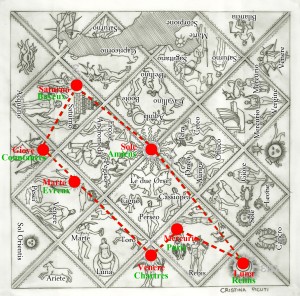


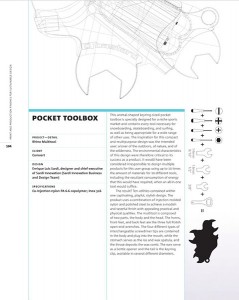 This animal-shaped key ring-sized pocket toolbox is specially designed for a niche sports market and contains every tool necessary for snowboarding, skateboarding and surfing, as well as being appropriate for a wide range of other uses. The inspiration for this compact and multipurpose design was the intended user: a lover of the outdoors, of nature and of the wilderness. The environmental characteristics of this design were therefore critical to its success as a product. It would have been considered irresponsible to design multiple products for this user group using up to 10 times the amount of materials for 10 different tools, including the resultant consumption of energy that this would have required, when an all-in-one tool would suffice.
This animal-shaped key ring-sized pocket toolbox is specially designed for a niche sports market and contains every tool necessary for snowboarding, skateboarding and surfing, as well as being appropriate for a wide range of other uses. The inspiration for this compact and multipurpose design was the intended user: a lover of the outdoors, of nature and of the wilderness. The environmental characteristics of this design were therefore critical to its success as a product. It would have been considered irresponsible to design multiple products for this user group using up to 10 times the amount of materials for 10 different tools, including the resultant consumption of energy that this would have required, when an all-in-one tool would suffice.



